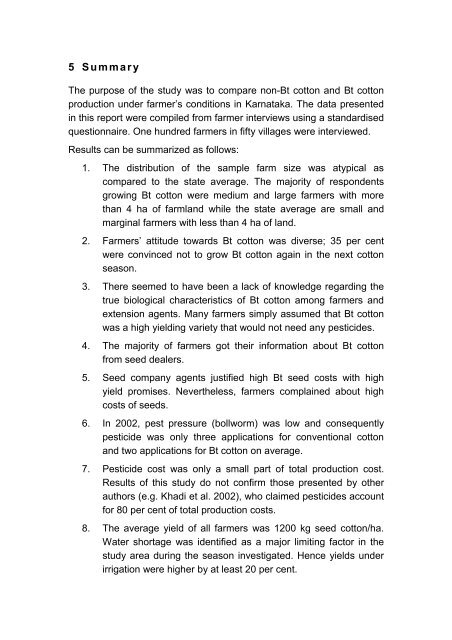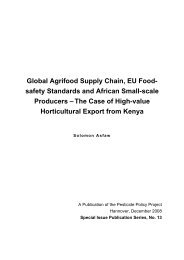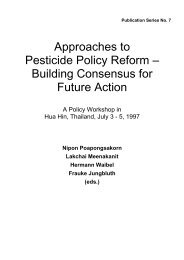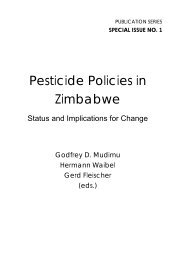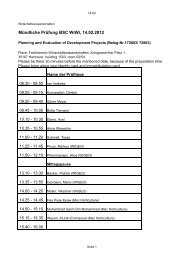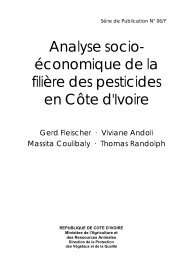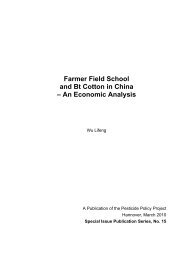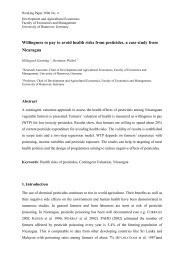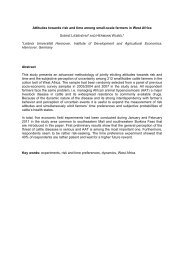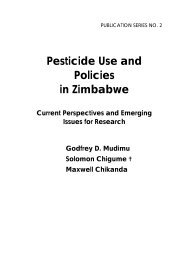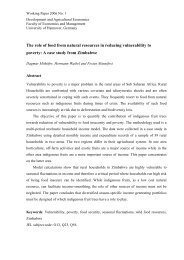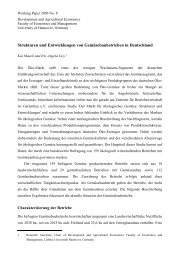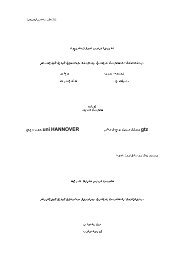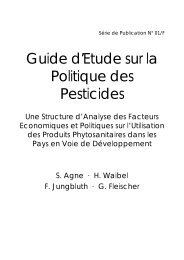PPP Special 08 - Institut für Entwicklungs- und Agrarökonomik
PPP Special 08 - Institut für Entwicklungs- und Agrarökonomik
PPP Special 08 - Institut für Entwicklungs- und Agrarökonomik
Create successful ePaper yourself
Turn your PDF publications into a flip-book with our unique Google optimized e-Paper software.
5 Summary<br />
The purpose of the study was to compare non-Bt cotton and Bt cotton<br />
production <strong>und</strong>er farmer’s conditions in Karnataka. The data presented<br />
in this report were compiled from farmer interviews using a standardised<br />
questionnaire. One h<strong>und</strong>red farmers in fifty villages were interviewed.<br />
Results can be summarized as follows:<br />
1. The distribution of the sample farm size was atypical as<br />
compared to the state average. The majority of respondents<br />
growing Bt cotton were medium and large farmers with more<br />
than 4 ha of farmland while the state average are small and<br />
marginal farmers with less than 4 ha of land.<br />
2. Farmers’ attitude towards Bt cotton was diverse; 35 per cent<br />
were convinced not to grow Bt cotton again in the next cotton<br />
season.<br />
3. There seemed to have been a lack of knowledge regarding the<br />
true biological characteristics of Bt cotton among farmers and<br />
extension agents. Many farmers simply assumed that Bt cotton<br />
was a high yielding variety that would not need any pesticides.<br />
4. The majority of farmers got their information about Bt cotton<br />
from seed dealers.<br />
5. Seed company agents justified high Bt seed costs with high<br />
yield promises. Nevertheless, farmers complained about high<br />
costs of seeds.<br />
6. In 2002, pest pressure (bollworm) was low and consequently<br />
pesticide was only three applications for conventional cotton<br />
and two applications for Bt cotton on average.<br />
7. Pesticide cost was only a small part of total production cost.<br />
Results of this study do not confirm those presented by other<br />
authors (e.g. Khadi et al. 2002), who claimed pesticides account<br />
for 80 per cent of total production costs.<br />
8. The average yield of all farmers was 1200 kg seed cotton/ha.<br />
Water shortage was identified as a major limiting factor in the<br />
study area during the season investigated. Hence yields <strong>und</strong>er<br />
irrigation were higher by at least 20 per cent.


